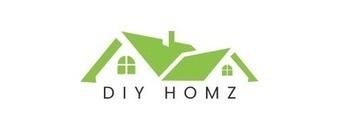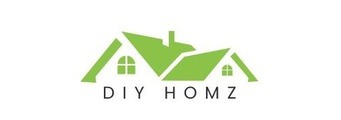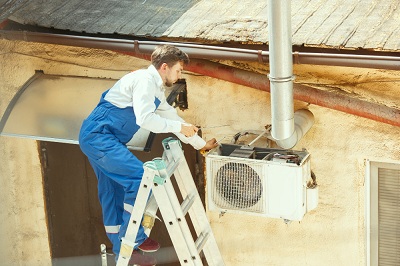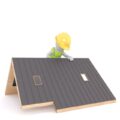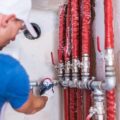Heating, ventilation, and air conditioning (HVAC) systems are the backbone of modern comfort. However, like all complex systems, they are prone to malfunctions. Understanding common HVAC problems and knowing how to troubleshoot them can save time, money, and discomfort. Below, we will delve into the most frequent issues that HVAC systems face and provide comprehensive guidance on how to address them.
1. HVAC System Not Heating or Cooling Properly
One of the most frequent complaints homeowners have is when the HVAC system fails to maintain the desired temperature. This issue could arise from various underlying problems.
Dirty Air Filters
Dirty air filters are a common culprit. When filters become clogged with dirt and debris, airflow is restricted, making it difficult for the system to function efficiently.
Troubleshooting Tip: Regularly check and replace air filters, typically every 1-3 months depending on the usage and type of filter. This simple maintenance task can greatly improve HVAC performance.
Thermostat Issues
Sometimes, the problem is not with the HVAC unit itself but with the thermostat. Incorrect settings or a malfunctioning thermostat can prevent the system from heating or cooling as needed.
Troubleshooting Tip: Ensure the thermostat is set to the correct mode (heat or cool) and the temperature is properly adjusted. If the thermostat is battery-powered, replacing the batteries might solve the issue. If problems persist, consider recalibrating or replacing the thermostat.
Refrigerant Leaks
Low refrigerant levels due to leaks can severely impair the system’s cooling ability. Leaks not only reduce efficiency but can also cause the compressor to overheat and fail.
Troubleshooting Tip: If you suspect a refrigerant leak, contact a licensed HVAC technician to locate and repair the leak and recharge the system with the correct amount of refrigerant.
2. Unusual Noises from the HVAC System
Unusual noises coming from the HVAC system can be alarming and often indicate a problem that needs attention.
Banging or Clanking Noises
Banging or clanking noises usually point to a loose or broken part inside the system, such as a fan blade or motor component.
Troubleshooting Tip: Turn off the system and inspect for any visible loose parts. Tightening screws or bolts might resolve the issue. If the noise persists, it’s advisable to call a professional for a more in-depth inspection.
Squealing or Screeching Sounds
Squealing sounds are often caused by a worn-out belt or motor bearings.
Troubleshooting Tip: Replacing the belt or lubricating the motor bearings might eliminate the noise. If you are not comfortable doing this, a qualified technician can easily perform these tasks.
Hissing Sounds
A hissing noise typically indicates a refrigerant leak or a problem with the ductwork.
Troubleshooting Tip: Inspect ductwork for visible gaps or tears and seal them appropriately. For refrigerant issues, it’s crucial to have a professional inspect and fix the leak.
3. HVAC System Frequently Cycling On and Off
If your HVAC system is constantly turning on and off, a problem known as short cycling, it can lead to increased wear and tear, reduced efficiency, and higher energy bills.
Clogged Air Filters
As mentioned earlier, clogged air filters can restrict airflow, causing the system to overheat and shut down prematurely.
Troubleshooting Tip: Ensure that air filters are clean and replace them as needed. This can often resolve short cycling.
Thermostat Placement
If the thermostat is placed in an area that’s too close to a heat source or in direct sunlight, it might cause the system to short cycle.
Troubleshooting Tip: Relocating the thermostat to a more central location away from heat sources might resolve the issue. If relocation is not feasible, installing a thermostat with a remote sensor could be a good alternative.
Refrigerant Levels
Low refrigerant levels can also cause the system to short cycle.
Troubleshooting Tip: As with refrigerant leaks, this issue should be addressed by a professional who can correctly recharge the system after fixing any leaks.
4. Uneven Heating or Cooling
Uneven temperature distribution throughout the home is another common HVAC issue that can be frustrating for homeowners.
Blocked or Leaky Ducts
Ductwork that is blocked or leaking can lead to inconsistent airflow, resulting in uneven heating or cooling.
Troubleshooting Tip: Inspect ductwork for any visible blockages or leaks. Cleaning the ducts and sealing any gaps can often correct this problem.
Improperly Sized HVAC System
An HVAC system that is too large or too small for the space it’s supposed to heat or cool can lead to uneven temperatures.
Troubleshooting Tip: If you suspect that your HVAC system is improperly sized, consult with an HVAC professional who can perform a load calculation to determine the appropriate size for your system.
Poor Insulation
Insufficient insulation can cause certain areas of your home to be hotter or colder than others.
Troubleshooting Tip: Check the insulation in your home, particularly in the attic, walls, and around windows and doors. Adding more insulation where needed can help maintain a more consistent indoor temperature.
5. Water Leaks Around the HVAC System
Water pooling around your HVAC system is a sign of a problem that needs immediate attention.
Clogged Drain Line
A common cause of water leaks is a clogged condensate drain line. When the drain line becomes blocked, water backs up and leaks out of the system.
Troubleshooting Tip: Locate the drain line and clear any clogs. You can use a wet/dry vacuum to remove the blockage. Regularly cleaning the drain line can prevent future leaks.
Leaking Evaporator Coil
A leak in the evaporator coil can also cause water to pool around the HVAC unit.
Troubleshooting Tip: A leaking evaporator coil typically needs to be replaced, which is a job best left to a professional technician.
Improper Installation
Sometimes, water leaks can be the result of improper installation of the HVAC unit, leading to poor drainage.
Troubleshooting Tip: If you suspect installation issues, it’s best to contact the original installer or another professional to assess and correct the problem.
6. High Energy Bills
An unexpected spike in energy bills is often a sign that your HVAC system is not operating efficiently.
Dirty Air Filters
As highlighted earlier, dirty air filters can force your HVAC system to work harder than necessary, leading to higher energy consumption.
Troubleshooting Tip: Regularly replacing air filters can help keep energy costs in check.
Leaky Ductwork
Leaky ducts can cause conditioned air to escape, making the system less efficient and driving up energy costs.
Troubleshooting Tip: Sealing ductwork leaks can improve efficiency and reduce energy bills.
Aging HVAC System
Older HVAC systems are generally less efficient than newer models and can result in higher energy costs.
Troubleshooting Tip: Consider upgrading to a more energy-efficient system if your current unit is over 10-15 years old. Modern HVAC systems are designed to be more efficient and can significantly lower energy bills over time.
Conclusion
Understanding and troubleshooting common HVAC problems can extend the life of your system, improve its efficiency, and ensure consistent comfort in your home. Regular maintenance, such as changing air filters, inspecting ductwork, and addressing issues promptly, can prevent many of these problems from occurring. However, when in doubt, it’s always best to consult with a professional HVAC technician to ensure your system is running at its best.
